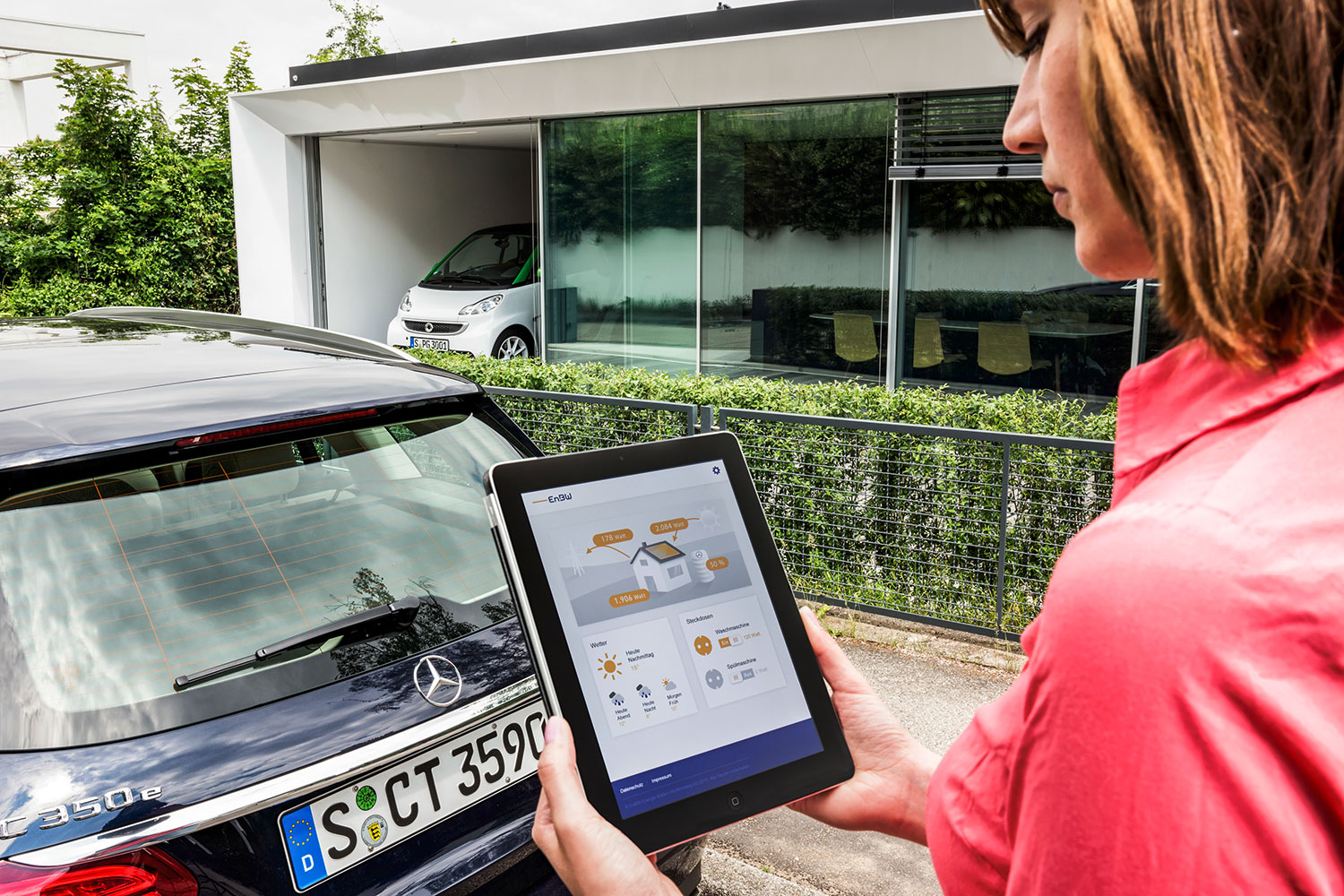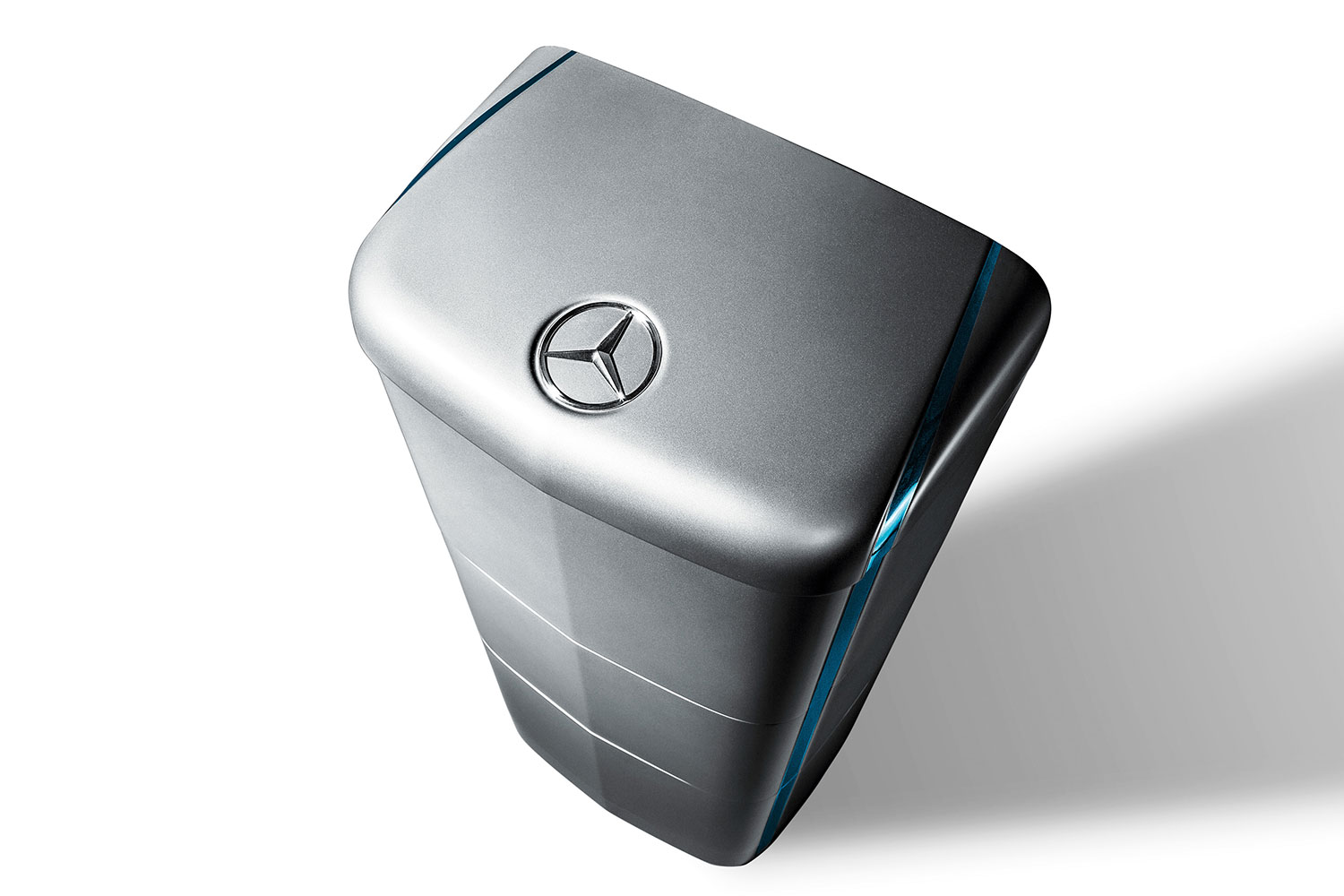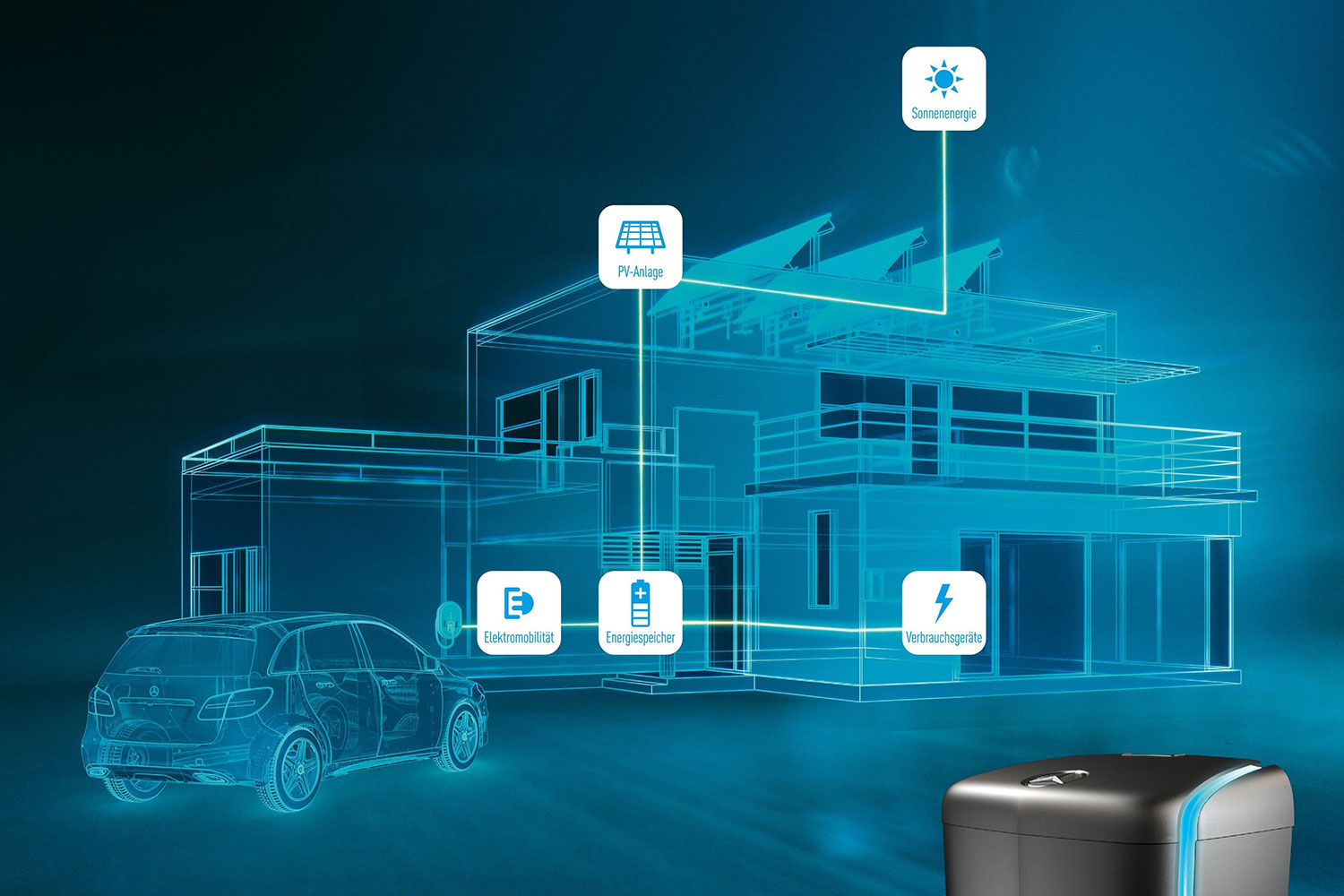
Now that the company is getting ready to sell its modular home battery units in other European markets, a Daimler spokesperson has gone public with the price per unit, or at least a price range. Including a required power inverter and installation, the total price for the Mercedes-Benz home battery will range from $9,000 to $10,000, according to Tech Insider.
The 66-pound Mercedes home battery can store 2.5kWh of electrical energy. Because it is modular, up to eight units can be hooked together for a total capacity of 20kWh. As a point of reference, an average U.S. home uses 30kWh of energy each day. In Germany the Mercedes home battery stores energy from solar panels and when the power is used in the home it’s converted to AC power via the inverter.
Unlike home batteries in the U.S., where the market is also just starting and where Tesla’s Powerwall gets all the attention, home batteries in Germany don’t draw energy from the conventional electric power grid. In the U.S. “net metering” is allowed and customers can draw power from the grid to store in a Powerwall when rates are low, for use in the evening when rates are higher, but that’s not allowed in Germany. Another difference is that in Germany, consumers can charge their electric cars directly from the home battery, which isn’t available in the U.S. at this time.
Tesla’s Powerwall home battery is not the only competitor on the world market, but it is the most obvious point of comparison. At 200 pounds the Powerwall is much heavier than the Mercedes battery, but it also stores more power, 6.4kWh. Nine Powerwalls can be mounted together for a potential total energy storage of 58kWh. Not only is the Tesla Powerwall more powerful, it’s also less expensive, priced at $3,000 for the bare unit and with a final cost including installation and inverter often amounting to more than $7,000, according to Tech Insider.
A maximum array of Powerwall batteries has the capacity for almost two days of power for a typical American household while a maximum array of Mercedes batteries will last for less than one day. Daimler, however, believes that most people aren’t looking to fully power their homes, but for a conveniently sized backup power solution.
“The modules themselves are rather lightweight at less than 30 kilograms, so you can carry it with one man compared to Tesla,” said Frank Spennemann, Daimler senior manager of business innovation. “You can put it on the ground, so you don’t have to wall mount it, and it has very easy wiring.”
Nissan and startup company Orison have also recently announced home battery solutions. Nissan’s xStorage will store 4.2kWh of energy and cost about $4,500 including installation. Nissan expects to ship the xStorage battery system in September, according to Ars Technica. Orison’s 40-pound battery panel can store 2.2kWh of energy or a maximum of 13.2kWh if five panels are linked together. Orison has not set firm prices for its unit but it did have a successful Kickstarter crowdfunding campaign in which units could be reserved at $1,600. Orison expects to ship by this summer.






